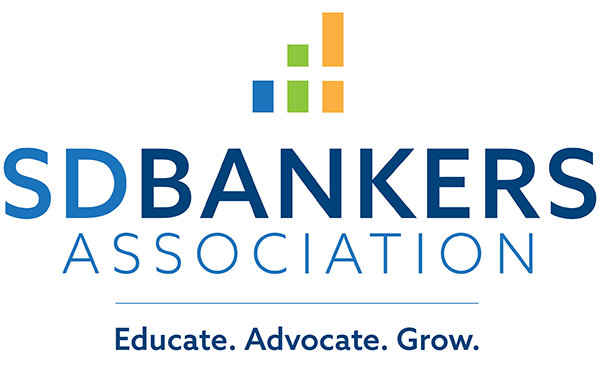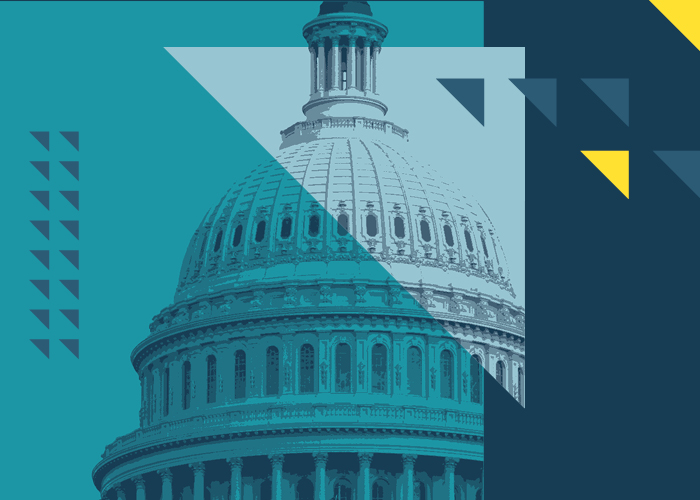- Education & Events
- Advocacy
- Products & Services
- Membership
- Resources
- SDBANKER Magazine
- SDBA eNews
- SDBA eNews Archives
- Legislative Update/Bill Watch
- South Dakota Bank Directory
- Women in Banking
- Scenes of South Dakota Calendar*
- Holiday Signs
- Regulatory Report
- South Dakota Banking Code
- Record Retention Manual
- Advertising & Sponsorship Guide
- COVID-19 Resources
- Mental Health and Crisis Prevention
- About
|
News
SDBA Updates
SDBA Events
Online EducationCompliance AllianceABA Webinar: Join the Fight to Close the Stablecoin Loophole
ABA will hold a free webinar for bankers on Monday, Jan. 12, at 2 p.m. ET on its ongoing efforts to block the crypto industry’s bid to exploit a loophole in stablecoin legislation that threatens to drain bank deposits and damage local lending. Find out how you can join bankers from across the country by adding your bank’s important voice to this urgent policy debate in Washington. Speakers- Rob Nichols, President & CEO, American Bankers Association- Kirsten Sutton, Executive Vice President, Congressional Relations, American Bankers Association - Brooke Ybarra, SVP, Innovation and Strategy, American Bankers Association - Kenneth Kelly, ABA Chair and Chairman and CEO, First Independence Bank, Detroit, MI - Peter Cook, Chief Communications Officer, American Bankers Association (Moderator) REGISTERBack to TopABA Banking Journal: House Republicans propose bill to overhaul community bank regulationJanuary 7, 2026
Republicans on the House Financial Services Committee today unveiled a new bill they said would boost community banking by promoting de novo bank formation, raising regulatory thresholds and revising agency regulatory and supervisory practices. The Main Street Capital Access Act (H.R. 6955) brings together several proposals that had been previously floated in Congress. Committee Chairman French Hill (R-Ark.) and Financial Institutions Subcommittee Chairman Andy Barr (R-Ky.) said the goal of the legislation is to revitalize local bank formation. Provisions in the proposed legislation include:
In a statement on X, the American Bankers Association welcomed the legislation. “We’re eager to work with Congress and the administration on policy changes that will allow America’s community banks to do even more to support the economy,” ABA said. Back to TopABA Banking Journal: Bowman: Fed reviewing supervisory information-sharing rules
Currently, labelling information as CSI results in strict restrictions on its disclosure, with banks and bank employees subject to possible criminal penalties for sharing the data. In a speech at a California Bankers Association event, Bowman said banks are liable for sharing CSI related to fraud among themselves even if that information would make them more resilient to emerging fraud risks. “Likewise, bank regulators dedicate a great deal of time and effort to reviewing bank cyber risk profiles and controls, and yet opportunities for collaboration and sharing can be limited by the fear that sharing CSI could result in criminal penalties,” she said. “These examples demonstrate how expansive the definition of CSI has become. The vague and overbroad definition and interpretation of CSI effectively prohibit constructive speech and information sharing.” Bowman also said CSI could be used to shield abusive supervisory practices. “To address these weaknesses, we are reviewing approaches to better define or create circumstances in which CSI can be shared, including through creating limited-use cases exempt from the definition of CSI,” she said. Back to TopABA Fraudcast: FTC report shows how elder fraud is expandingDriving skyrocketing losses is significant increases in scams totaling $100,000 or more.January 7, 2026
A focus on elder fraud kicks off Season 2 of the ABA Fraudcast, as Paul Benda interviews Lois Greisman, associate director of the Federal Trade Commission’s division of marketing practices. They discuss Protecting Older Consumers, 2024-2025, A Report of the Federal Trade Commission, issued in December, that reveals a big increase in the number of older adults reporting losses of over $100,000 to scams. The ABA Fraudcast will be published every three weeks, here and wherever you listen to and subscribe to your favorite podcasts, such as Apple and Spotify. Please subscribe! ABA offers resources to help banks prevent, identify, measure and report fraud, and to serve and protect consumers and their financial data. ABA’s scam prevention campaigns #BanksNeverAskThat and #PracticeSafeChecks are newly updated as well. ABA Fraudcast host is Paul Benda, EVP, risk, fraud and cybersecurity at ABA. Back to TopCISA News: Cyber Risk In 2026: How Geopolitics, Supply Chains and Shadow AI Will Test ResilienceJanuary 2, 2026 | Yuval WollmanGeopolitical realignment, the weaponization of critical supply chains, and the rapid diffusion of generative AI are redefining what it means to manage exposure. Welcome to 2026. The coming year will demand that organizations move from reactive security postures to proactive, intelligence-driven resilience, where cyber strategy, operational continuity and geopolitical awareness are deeply intertwined. Here are three key trends I believe will define the cybersecurity environment in 2026. Geopolitical Friction Will Remain a Multiplier of Cyber-Risk Over the past few years, we’ve witnessed major tectonic movements in geopolitics: the war in Ukraine, heightened tensions in the Middle East between countries like Israel and Iran, and increased strategic rivalry in East Asia, to name just a few. These physical conflicts bleed directly into the cyber domain, amplifying exposures for corporations and governments alike. I foresee this dynamic continuing into 2026 and evolving into new zones of pressure. In East Asia, for example, escalating state-backed cyber campaigns are already well-documented. On another axis, the Americas are increasingly drawn into friction as supply-chain chokepoints and rare-earth dependencies become strategic vulnerabilities. The semiconductor industry sits at the center of this dynamic. Taiwan, the South China Sea and China’s drive for self-sufficiency in rare-earth materials and advanced chip manufacturing are not hypothetical issues, they are active fault lines in the global economy. Any escalation in this region could reverberate across the entire technology ecosystem, from chip fabrication to AI model development. For global enterprises, these developments underscore a fundamental truth: geopolitical volatility is not merely an external factor, it’s an embedded component of cyber risk itself. Effective exposure management requires integrating geopolitical intelligence into cyber-resilience planning. This means continuously mapping dependencies, reassessing vendor footprints, and anticipating how shifting alliances or sanctions might trigger new threat campaigns. Shipping And Maritime Logistics Will Become Prime Targets As global friction intensifies, the maritime industry (the linchpin of international trade) faces mounting cyber-risk. In August 2024, the Port of Seattle identified a cyber-attack that led to system outages and the disclosure of personal data for some 90,000 individuals. The Coast Guard Cyber Command has reported a record number of maritime cyber missions responding to incidents across critical shipping infrastructure. Shipping networks combine legacy systems, operational-technology dependencies, and global data connectivity, creating high-impact opportunities for attackers. As sanctions, trade rerouting, and regional conflicts reshape maritime routes through the Suez Canal, the South China Sea, and the North Atlantic, threat actors are likely to increase campaigns targeting logistics visibility, port operations, and vessel communications. For 2026, maritime cyber-resilience will hinge on real-time monitoring, segmentation of operational networks, and intelligence-driven exposure management that links physical and digital risks. Shadow AI Will Emerge as the Next Unmanaged Risk Surface Finally, as enterprises continue to rush to harness generative AI, many are discovering that their greatest risk may lie not in external attacks but in potential exposures due to ungoverned internal use. Employees are increasingly adopting personal or unvetted AI tools to accelerate daily tasks, introducing the idea of shadow AI. Without clear policies on data access, model usage, and output validation, sensitive information can be easily exposed or misused. Read more: Gartner - 40% of Firms to Be Hit By Shadow AI Security Incidents In KPMG’s recent AI Security Benchmark Survey, the consultancy firm found that a significant portion of organizations lack defined AI vulnerability processes, incident-response playbooks or resilience plans. In 2026, this unmanaged layer will grow as generative models become embedded in productivity platforms and code environments. In addition, while existing policies have been well developed over the past decade to ensure that wider technologies and tools are well integrated and subject to approval processes, the sheer volume of the logs creates a serious visibility challenge, taking many companies back to square one in regards to shadow IT. Forward-looking organizations will respond by embedding AI governance controls into existing cyber and data-protection programs, treating model access, prompt integrity, and data lineage as core exposure-management priorities. Translating Awareness into Action Whether the catalyst is geopolitical friction, attacks on global shipping routes, or the unchecked growth of shadow AI, the common thread is exposure management, understanding where risk accumulates and responding with agility. Those that integrate geopolitical, operational and digital intelligence into a unified resilience strategy will be best positioned to navigate the uncertainty of 2026. Back to top
|




 The Graduate School of Banking at Colorado (GSBC) and the SDBA are partnering to recognize community banks across South Dakota that are redefining what it means to serve customers and communities boldly.
The Graduate School of Banking at Colorado (GSBC) and the SDBA are partnering to recognize community banks across South Dakota that are redefining what it means to serve customers and communities boldly.


 Join the biggest annual gathering of bank leaders in Washington to push for a bank policy framework that lets your bank stay focused on serving your customers, clients and communities. Hear directly from key players in the 119th Congress and the new administration on what the future holds for banks of all sizes.
Join the biggest annual gathering of bank leaders in Washington to push for a bank policy framework that lets your bank stay focused on serving your customers, clients and communities. Hear directly from key players in the 119th Congress and the new administration on what the future holds for banks of all sizes.